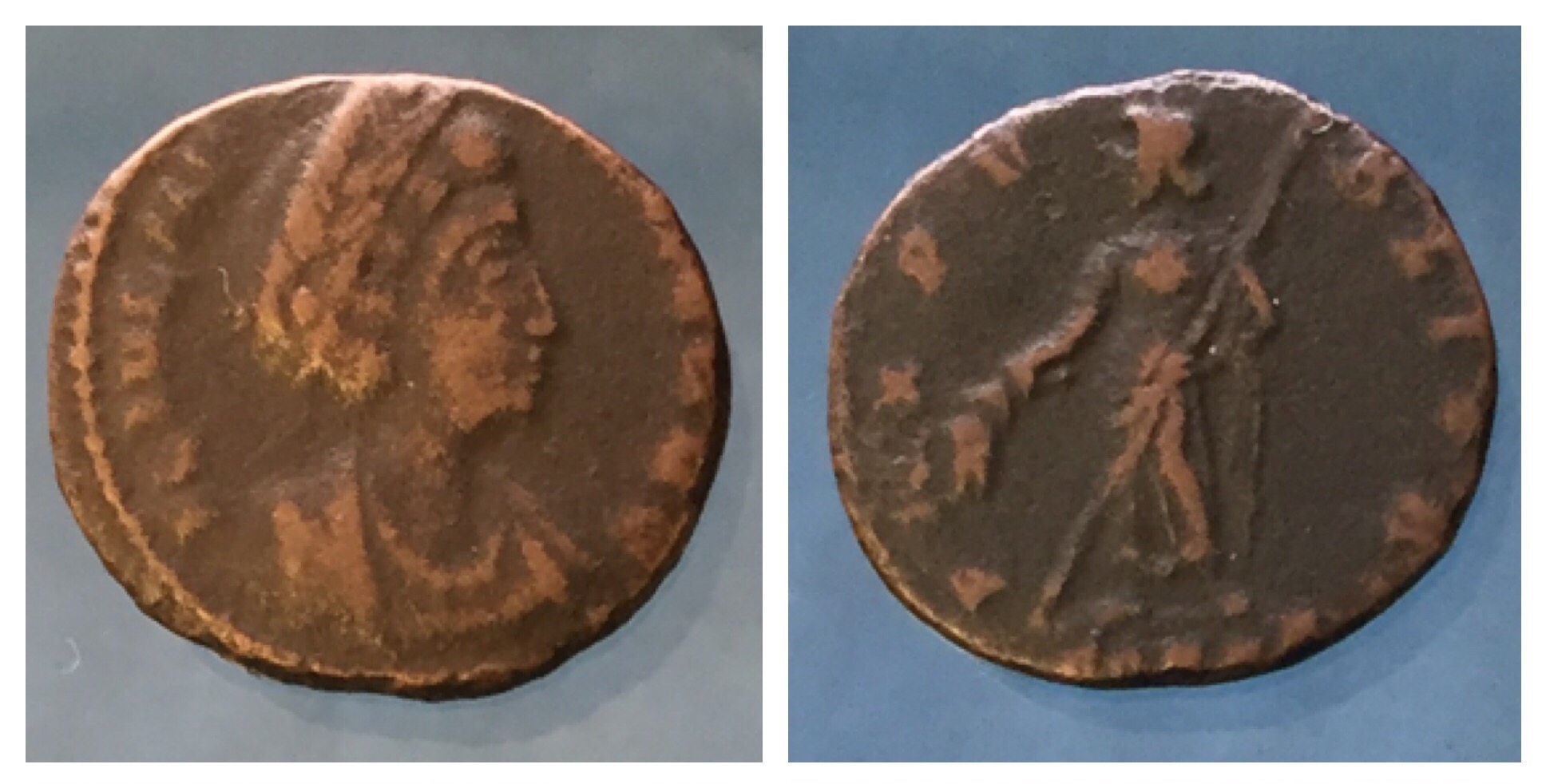Roger Uselton Collection of Ancient and Biblical Coins
Coin Detail
- Uselton Catalog #: 28
- Class: Roman Imperatorial & Imperial
- Ruling Authority: Helena ()
- Date Struck: 337-340 A.D.
- Type: Bronze AE3
- Size: 14.60 mm.
- Weight: 1.44 g.
- Die Axis: 180°
- Obverse: FL IVL HE-LENA AVG; diademed and mantled bust right of Helena wearing imperial mantle and pearl necklace.
- Reverse: PAX PVBLICA; Pax standing left, olive branch pointed down in right hand, long scepter transverse in left hand.
- Exergue: CONSE?
- References:
- Original #: 25
A posthumous commemorative. “Jerusalem was still being rebuilt following the destruction caused by Emperor Hadrian. He had built a temple over the site of Jesus’s tomb near Calvary, and renamed the city Aelia Capitolina. Accounts differ concerning whether the Temple was dedicated to Venus or Jupiter According to tradition, Helena ordered the temple torn down and, according to the legend that arose at the end of the 4th century, chose a site to begin excavating, which led to the recovery of three different crosses. The legend is recounted in Ambrose, On the Death of Theodosius (died 395) and at length in Rufinus’ chapters appended to his translation into Latin of Eusebius’ Ecclesiastical History, the main body of which does not mention the event. Then, Rufinus relates, the empress refused to be swayed by anything short of solid proof and performed a test. Possibly through Bishop Macarius of Jerusalem, she had a woman who was near death brought from the city. When the woman touched the first and second crosses, her condition did not change, but when she touched the third and final cross she suddenly recovered, and Helena declared the cross with which the woman had been touched to be the True Cross. On the site of discovery, Constantine ordered the building of the Church of the Holy Sepulchre; churches were also built on other sites detected by Helena. Sozomen and Theodoret claim that Helena also found the nails of the crucifixion. To use their miraculous power to aid her son, Helena allegedly had one placed in Constantine’s helmet, and another in the bridle of his horse.” –Forum Ancient Coins

